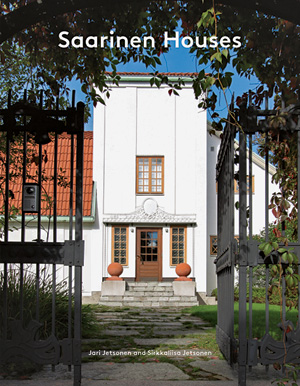Father and Son, Together and Apart
This beautifully illustrated book covers most of the houses designed by Eliel Saarinen, with his partners and members of his family, and by his son, Eero, both with Eliel and with associates of his own. It is important because most writing about Eero pays far too little attention to the influence of his father or to the collaborative nature of both their practices.

The authors, a photographer and an architect, know about cooperative family ventures, since they are married and have done several books together.
This book shows how the Saarinens' work evolved from its National Romantic origins in Finland at the beginning of the 20th century to the heyday of midcentury Modernism. The Saarinens contributed to both movements significantly. The villas that Eliel and his colleagues designed in Finland were masterpieces of the Arts and Crafts movement in Scandinavia. And the houses Eero designed in America embody the transition from his father's mode to one directly derived from the mechanical technology that he learned while designing the General Motors Technical Center outside Detroit (1955).
Some of the houses are well known. Three are even museums—Eliel's Hvitträsk, on a lake outside Helsinki (1902), the Saarinen House at Cranbrook in Michigan (1930), and Eero's Miller House in Columbus, Indiana (1957). But the book also includes 10 Finnish villas from the early 20th century, some Modern houses in the Midwest by the Saarinen Swanson and Saarinen firm from the 1930s and '40s, and a house Eero built for his mother on his own property in Michigan after Eliel's death.
Most interesting, perhaps—because they are not widely known and have lessons to teach for urban planning today—are some rowhouses that Eliel designed as part of his plan for the Munkkiniemi-Haaga area of Helsinki in 1916. These large, gracious homes combined the advantages of urban and suburban dwellings and provided inspiration for those that Eliel designed at Cranbrook. They are integrated with their natural settings and yet occupy the landscape economically enough to provide excellent models for development now.
A touching final essay by Eero's daughter, the landscape architect Susan Saarinen, describes the dynamics of “a family where art and design were” not just “a common topic of conversation at the dinner table” but a way of life. This book provides a window into that life.
Jayne Merkel is a contributing editor of RECORD and the author of Eero Saarinen (Phaidon, 2005), which chronicles the work of both Saarinens.

Post a comment to this article
Report Abusive Comment